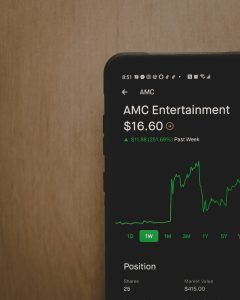Forex trading involves buying and selling of currencies in the global foreign exchange market. It is a fast-paced, high-risk, and high-reward market that attracts a lot of traders. However, before you start trading, you should know that there are various fees involved in forex trading. These fees are usually applied by brokers and other intermediaries involved in forex trading. In this article, we will discuss the most common fees that are applied in forex trading.
1. Spread
Spread is the difference between the bid and ask price of a currency pair. The bid price is the price at which a trader can sell a currency, while the ask price is the price at which a trader can buy a currency. The spread is usually measured in pips and is the primary way that brokers make money. Brokers apply a spread on every trade you make, and the size of the spread depends on the currency pair you are trading, the liquidity of the market, and the broker’s commission structure.
2. Commission
Some brokers charge a commission for every trade you make. The commission is usually a fixed amount or a percentage of the trade size. Brokers who charge a commission usually have lower spreads than those who don’t. The commission fee can be significant for traders who make multiple trades in a day or who trade high volumes.
3. Overnight Fees
Forex trading is a 24-hour market, and some traders hold positions overnight. Holding a position overnight can attract an overnight fee or rollover fee. The overnight fee is the cost of holding a position overnight, and it is usually calculated based on the interest rate differential between the two currencies in the currency pair. The interest rate differential is the difference between the interest rates of the two currencies. If the interest rate of the currency you are buying is higher than the interest rate of the currency you are selling, you will receive a credit. If the interest rate of the currency you are buying is lower than the interest rate of the currency you are selling, you will pay a fee.
4. Inactivity Fees
Some brokers charge inactivity fees if you do not trade for a prolonged period. The inactivity fee is usually a fixed amount or a percentage of your account balance. The purpose of the inactivity fee is to encourage traders to keep trading and to cover the cost of maintaining the account.
5. Deposit and Withdrawal Fees
Brokers may charge a fee for depositing or withdrawing funds from your trading account. The fee can be a fixed amount or a percentage of the transaction amount. The fee varies depending on the payment method you use. For example, credit card deposits and withdrawals may attract higher fees than bank wire transfers.
6. Currency Conversion Fees
If you are trading a currency pair that is not in your account currency, your broker may apply a currency conversion fee. The currency conversion fee is the cost of converting your account currency into the currency of the currency pair you are trading. The fee can be a fixed amount or a percentage of the transaction amount.
Conclusion
Forex trading involves various fees that are applied by brokers and other intermediaries. The most common fees are spread, commission, overnight fees, inactivity fees, deposit and withdrawal fees, and currency conversion fees. Before you start trading, you should research and compare the fees of different brokers to find the one that offers the best value for your trading style and needs.





